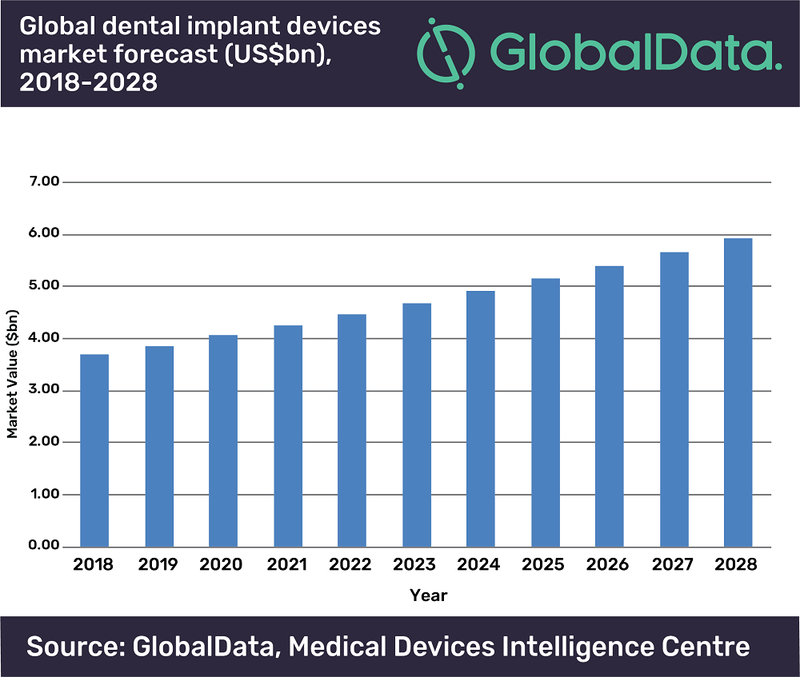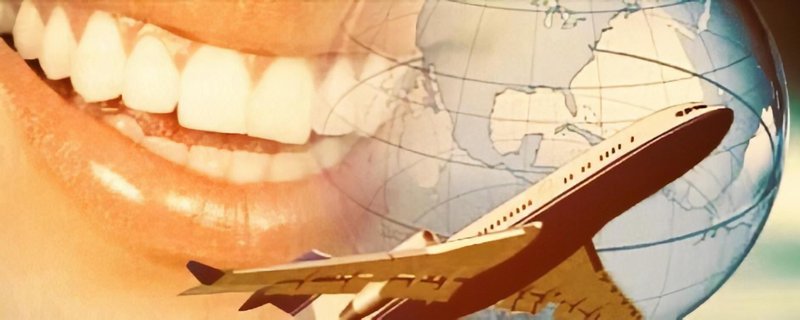The approximate follow-up of patients: a too often downplayed risk of dental tourism.
The global dental tourism market is expected to grow at a CAGR of 12% to reach $5.83B by 2025(1). This is due to the lack of insurance coverage for dental procedures and rising treatment costs in developed countries. This large-scale trend results in many health and economic problems for dentists and their patients. What are they and what are the solutions for practitioners?
Dental tourism, the practice of seeking dental treatment in a country other than the one in which one lives(2), is not a new phenomenon. Even in ancient times, pilgrims did not hesitate to travel several hundred kilometers to Greece in the hope of restoring their health with Hippocrates or his disciples.
Today, more than 400,000 Americans choose to travel abroad for dental treatment(3). The top 10 destinations for dental tourism among U.S. patients are Mexico, Thailand, Hungary, Spain, Poland, Costa Rica, the Philippines, Malaysia, Turkey, and the Czech Republic (4).
On the other side of the Colorado River, about a 30-minute drive from Yuma, Arizona, is the small Mexican town of Los Algodones, which calls itself “Molar City”. The town has only about 5,000 permanent residents, but thousands of tourists flock to the town each year to take advantage of the 350 dentists downtown(5). Some clinics even provide transportation for patients to and from the airport or other major cities(6).
“Turkey [and now Italy] are starting to penetrate this niche,” says Doniphan Hammer from the French Confederation of Dental Unions, testifying to a growing market around the globe.
The main motivation for patients is to save money: A dental implant costs an average of $2,800 in the US, compared with $850 in Mexico(7). In addition, waiting lists for selective procedures in Western countries can be long, such as in the United Kingdom, where patients have waited up to three years for an appointment with a dentist(8). Finally, some people want the treatment process to be as quick as possible. For example, in dental implant procedures where bone quality is sparse, an integration time of 3-6 months is recommended to allow the jawbone to anchor well to the implant and the soft tissue to heal. This period is respected in developed countries(9) but is sometimes shortened to a few weeks in low-cost centers in Mexico, Eastern Europe, or Asia. Moreover, the offers are becoming more and more complete and some propose to combine the trip with leisure activities. A reporter from the Washington Post shared his experience when he had five crowns replaced in Costa Rica: “It would take a few days to have the crowns done, so my wife and I took a short flight to the Drake Bay area, where we snorkeled, swam, and poked around in the mangroves”. With airfare, lodging, food, and the dental treatment, his entire trip cost about $4,000 – about $1,000 less than his dental expenses would have been in the United States (US) alone(10).
There are many risks associated with dental tourism. Because of the distance, there may be a lack of follow-up care when patients return home. Craig Barrows is DDS in Yuma, a city near Los Algodones where he has seen a tremendous number of patients who have been dissatisfied with the work they received. He adds that American patients who go to Los Algodones are “completely taken advantage of.” He describes that one of his patients had $25,000 worth of implants placed in Los Algodones and that during a follow-up visit, this patient’s implants were infected. None of the implants were guaranteed, and this seriously undermined the cost savings the patient thought he had achieved by traveling to Mexico. In addition, hygiene standards are sometimes not perfectly maintained or simply not adapted to the immune system of tourists. For this reason, 25% of operations in the UK have to do with infections caused by a medical procedure performed abroad(8).
There is also the problem of traceability. In the case of dental implants, each practitioner is trained and works with specific brands of implant systems. Also, a dentist is equipped with instruments that may vary from practitioner to practitioner.
Most implant manufacturers try to differentiate by introducing unique designs so that there are now more than 3500 implant models from more than 300 different brands in the world(11), not to mention their associated prosthetic components: abutment, healing screw, attachment, screwdriver, transfer, titanium base, locator, multi-unit, extractor… In addition, the ease of manufacturing implants has led many companies to penetrate this market and further diversify existing references and their technical features(12).
This becomes a problem when the implant needs to be treated or when certain components need to be replaced. A survey on the prevalence of clinical difficulties related to the identification and restoration of unknown dental implants shows that 79.9% of American dentists(13) are concerned. The same survey shows that 44% of them have inadvertently ordered the wrong prosthetic components. Moreover, some implant brands are not distributed in some countries, while others have simply disappeared. Consequently, it can be very complicated and time-consuming for a practitioner to identify an implant, find its technical information and finally obtain the official components or an accessible compatible equivalent.
So what happens in these situations?
In response to this situation, some clinicians redirect their patients to the public hospital to avoid being held liable, even if this implies the violation of medical ethics(14). Others strive to find a solution for their patient despite the considerable amount of time it involves, sometimes relying on Internet advice of questionable credibility and with no guarantee of success.
Fortunately, solutions are emerging. The European Data Exchange System project aims to collect, centralize and secure all patient health information in the EU(15). In the specific case of dental implants, an implant passport already exists, but most patients do not keep this document for several years.
In the US, the idea could be to develop more standards, to raise awareness of the importance of one’s medical follow-up, or to make the data of individual manufacturers available for all even if they have disappeared.
Spot implant is a concrete and effective solution to this problem. This technology makes it possible to find the reference of an implant from a simple X-ray image. Its database allows access to the product data sheets of most existing and former implants. The service guides the practitioner to the official supplier if it exists, or to a compatible generic if not. The goal is to provide a solution for all patients.
Finally, in the case of the US, dental tourism is highly dependent on the percentage of Americans with dental insurance coverage, and whether insurance companies may cover part of the cost of treatment abroad.
A 2012 report from Senator Bernie Sanders estimated that 130 million Americans were without dental insurance. However, the Affordable Care Act, which went into effect in 2013, has brought that number down significantly. Despite numerous criticisms (16), with the recent support of the Supreme Court(17), this law has allowed more than 31 million Americans who previously did not have health insurance to purchase it(17). It remains to be seen if these actions will impact the growth of dental tourism.
References :
- “Global Dental Tourism Market Size 2017 By Treatment Type (Preventive Treatment, Restorative Treatment, Prosthodontics Treatment, OMS, and Other Treatments), By Region and Forecast 2018 to 2025”, Adroit Research, November 2018.
- American Dental Association (Resolution 28H-2008).
- Report, Brandon Green, Fox News Website, November 1, 2013.
- Report, Patients Beyond Borders.
- “A Reason To Smile: Mexican Town Is A Destination For Dental Tourism”, Robbins Ted, NPR, 9 June 2014.
- Dayo Global Medical Network LLC. Dayo Dental.
- “Low-Cost Dental Implants in Mexico”, Medical Tourism Corporation, November 24, 2018.
- “People in England ‘face three-year waits for dentist appointments’”, The Guardian, May 24, 2021.
- “Pose d’implants dentaires : comment mettre un implant et combien dure-t-il ?”, Dr George & Associés.
- “Dental Tourism — Bargain Dentistry and a Vacation to Boot.” Salmon, Mike, The Washington Post, September 1, 2019.
- Numbers from the Spotimplant.com catalog, the world’s most comprehensive database of dental implants to date.
- “Evolution of the Dental Implant Market: An African Tale Revisited”, Ehrenfest & Rutkowski, Journal of Oral Implantology, 2012.
- Robert Douglas Walter, Journal of Oral Implantology, February 2020.
- ADA Code Section 2.F, Patient Abandonment.
- “Système européen d’échange des données : quels enjeux pour la santé ?”, Laure Millet, Institut Montaigne, April 29, 2019.
- “Trump Administration Asks Supreme Court to Strike Down Affordable Care Act”, Sheryl Gay Stolberg, New York Times, November 10, 2020.
- “Supreme Court dismisses challenge to Affordable Care Act, leaving it in place”, Ariane de Vogue and Chandelis Duster, CNN, June 17, 2021.
